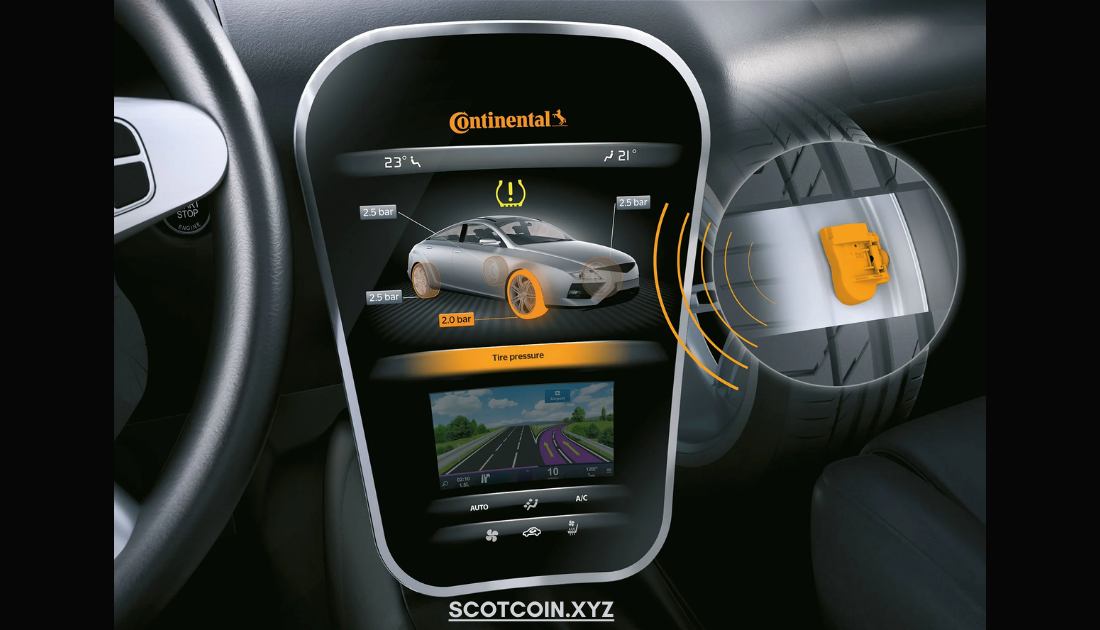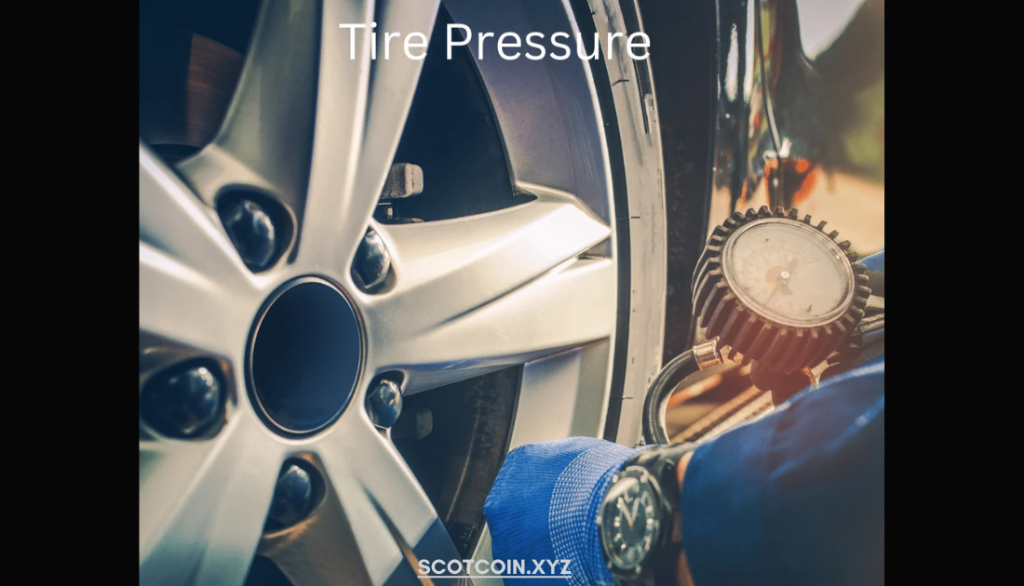Blog
Smart Tire Pressure Management: A Key to Safe and Efficient Driving
Keeping your tires in optimal condition is essential for a smooth, safe ride. One of the simplest yet most impactful ways to maintain tires is by ensuring they have the correct pressure. Smart tire pressure management takes this a step further, providing real-time monitoring and alerts to help drivers maintain proper tire pressure with minimal effort. In this guide, we’ll explore the benefits of smart tire pressure management and how it can enhance both safety and efficiency.
1. What is Smart Tire Pressure Management?
Smart tire pressure management uses advanced sensors and wireless technology to monitor tire pressure continuously. Unlike traditional tire pressure monitoring systems (TPMS) that provide alerts only when the pressure drops, smart systems provide real-time data. Many systems also allow drivers to check pressure levels on their smartphone, offering convenience and accessibility.
- How It Works: Tiny sensors placed within each tire transmit pressure data to a central receiver, which then sends alerts if pressure levels fall below or exceed recommended limits.
2. Benefits of Smart Tire Pressure Management
Smart tire pressure management offers several advantages, from improved safety to cost savings. Here’s a look at some of the main benefits:
- Enhanced Safety: Proper tire pressure reduces the risk of blowouts and improves handling, making your drive safer.
- Fuel Efficiency: Under-inflated tires create more resistance, which can decrease fuel efficiency. Maintaining optimal pressure helps save on fuel costs.
- Extended Tire Lifespan: Tires wear evenly when pressure levels are correct, extending their lifespan and reducing the need for frequent replacements.
- Convenience: With real-time alerts, drivers can avoid the hassle of checking tire pressure manually, saving time and effort.
3. How to Choose the Right Smart Tire Pressure Management System
Choosing the best smart tire pressure management system depends on your specific needs and driving habits. Here are some features to consider:
- Real-Time Monitoring: Look for systems that offer continuous monitoring, providing updates on pressure levels as you drive.
- Mobile Integration: Many systems connect with smartphone apps, allowing you to check tire pressure remotely.
- Battery Life: Long-lasting batteries are essential for sensors to remain effective. Some sensors come with replaceable batteries, while others may require occasional charging.
- Durability: Choose sensors that can withstand different weather conditions, especially if you live in an area with extreme temperatures.
4. Top Smart Tire Pressure Management Systems Available
If you’re ready to upgrade, here are a few top-rated smart tire pressure management systems that offer reliable performance:
- Nonda ZUS Smart Tire Safety Monitor: This system features real-time monitoring and alerts, along with a sleek smartphone app. It provides temperature readings as well, making it ideal for drivers who want detailed data.
- FOBO Tire Plus: Known for its user-friendly app, FOBO Tire Plus monitors pressure and temperature, sending alerts directly to your smartphone. This system offers easy installation and compatibility with most vehicles.
- Garmin Tire Pressure Monitoring System: Designed for those with Garmin GPS devices, this system pairs with Garmin navigators to display tire pressure data on the screen. It’s a great choice for drivers already using Garmin products.

5. Installation Tips for Smart Tire Pressure Management Systems
Installing a smart tire pressure management system is often straightforward, but following a few tips can ensure optimal performance:
- Read the Manual: Every system is unique, so reviewing the manual ensures proper installation and setup.
- Ensure Correct Sensor Placement: Each sensor should be installed according to the manufacturer’s guidelines for accurate readings.
- Test the System: After installation, test the system by driving a short distance to confirm it’s working correctly.
- Check Compatibility: Some systems are specific to certain vehicle types, so verify compatibility with your car.
6. How Smart Tire Pressure Management Saves You Money
In addition to safety benefits, smart tire pressure management can lead to significant cost savings over time:
- Reduced Fuel Costs: Properly inflated tires minimize resistance, which can improve fuel efficiency by up to 3%.
- Fewer Tire Replacements: Correct pressure reduces uneven wear, extending tire lifespan.
- Lower Maintenance Costs: Since under-inflated tires can affect suspension and alignment, maintaining proper pressure helps reduce related maintenance expenses.
7. Understanding the Alerts and Data Provided
One of the standout features of smart tire pressure management is the real-time data and alerts. Understanding what these alerts mean can help you take quick action when necessary.
- Pressure Alerts: These alerts notify you if a tire’s pressure drops below or rises above the recommended levels. Some systems allow customization, so you can set specific thresholds.
- Temperature Warnings: Temperature can affect tire pressure, especially during extreme weather. If a sensor detects unusual temperature changes, it may alert you to check the tires for potential issues.
- Battery Alerts: Some systems will alert you when the sensor batteries are low, ensuring you don’t lose access to monitoring data.
8. Maintaining Your Smart Tire Pressure Management System
Regular maintenance of your smart tire pressure management system ensures it continues to function effectively:
- Check Sensors Regularly: Inspect the sensors periodically for any signs of wear or damage.
- Replace Batteries as Needed: Most systems require battery replacement every few years. Make sure to follow manufacturer recommendations for battery changes.
- Calibrate as Needed: Some systems may need recalibration after tire rotations or changes. Follow the user manual for calibration instructions.
9. Common Misconceptions About Smart Tire Pressure Management
There are a few misconceptions about smart tire pressure management that might keep some drivers from investing in it. Here are some clarifications:
- It’s Only for High-End Cars: While some high-end vehicles come with advanced tire pressure monitoring, smart systems are available as aftermarket options for nearly all car types.
- It’s Expensive: While initial costs may seem high, the savings in fuel and maintenance often offset the investment.
- It’s Hard to Install: Most systems are easy to install and come with clear instructions, so even those with limited technical knowledge can set them up.
Conclusion
Smart tire pressure management offers numerous benefits, from enhanced safety to improved fuel efficiency. With the convenience of real-time monitoring, you’ll have peace of mind knowing your tires are in optimal condition at all times. By investing in one of these systems, you’re not only taking proactive steps to protect yourself and your passengers but also making a smart financial decision that can lead to long-term savings.
Whether you’re a frequent driver or simply looking to increase the safety of your daily commute, a smart tire pressure management system is a valuable upgrade. Choose a system that fits your needs, and enjoy the confidence that comes from knowing you’re driving safely and efficiently.



